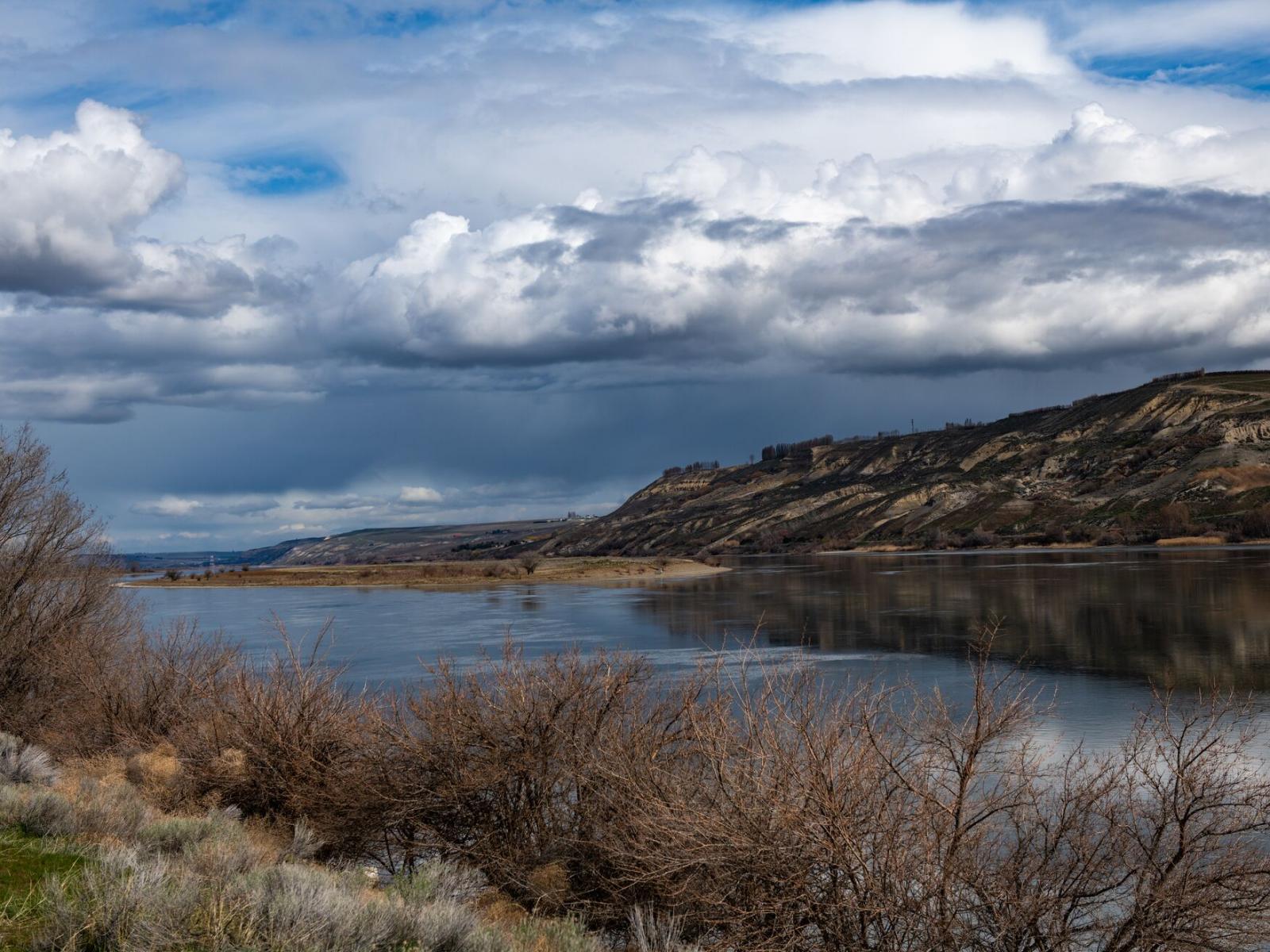Increasing Catchment Size Enhances the Variety of Functions Provided by Organic Matter in Rivers
At a basin scale, the transformations of organic molecules increase with catchment area and changes in land cover

A view of the Columbia River from Hanford’s 300 Area, Washington
(Photo by Andrea Starr | Pacific Northwest National Laboratory)
The Science
Dissolved organic matter (DOM) diversity regulates important river ecosystem processes across local and global scales. Despite this importance, few studies investigate the drivers of DOM diversity along a river continuum. To fill this knowledge gap, a new study conducted in the Yakima River Basin links DOM diversity to putative biochemical transformations and ecological functional diversity across scales. The study found that surface water DOM transformations and functional diversity metrics associated with molecular breakdown and energy increase with increasing the upstream catchment area. This pattern suggests that as organic matter molecules become more diverse in some biogeochemical characteristics, there is increased opportunity for biochemical transformations to occur. Therefore, as the opportunity for biochemical transformations increases, organic matter can become even more diverse.
The Impact
The results show that DOM diversity at a basin scale is influenced by characteristics of the DOM (e.g., energetics, breakdown potential), as well as land cover. Importantly, DOM diversity does not decrease along stream networks, as predicted by the common conceptual model, River Continuum Concept. These observations revealed previously unrecognized linkages among catchment area, land cover, and DOM biochemical and functional diversity. Overall, the results point to a new conceptual model where larger areas with diverse land cover types in river catchments contribute to a greater variety of organic matter functions. This is supported by a greater number of biochemical transformations, which may enhance the system’s ability to drive important biogeochemical processes.
Summary
Riverine DOM undergoes various transformations as it flows along river corridors, playing significant roles in biogeochemical processes. The DOM originates from land and contributes a substantial amount of carbon to the ocean, releasing CO2 as it undergoes abiotic and biotic reactions within rivers. This leads to variations in DOM properties and chemical diversity, which impact biogeochemistry and ecosystem functioning. There are still knowledge gaps about the factors driving DOM chemical diversity along riverine systems. In this study, the researchers used advanced mass spectrometry techniques to analyze DOM samples from the Yakima River Basin. The team identified potential biochemical transformations and assessed functional diversity based on characteristics of the molecular formulas that constitute DOM. The findings revealed that the diversity of biochemical transformations increased with larger upstream catchment areas and more diverse land cover types. These factors influenced the functional diversity of molecular formulas, indicating that greater diversity in biogeochemical characteristics allows for more biochemical transformations. Overall, the results highlight that DOM diversity does not decrease along a stream network as suggested by the River Continuum Concept. Instead, diversity of DOM is influenced by energetic characteristics and breakdown potential of DOM molecular formulas, as well as the patterns of land cover and land use.
PNNL Contact
James Stegen, Pacific Northwest National Laboratory, james.stegen@pnnl.gov
Funding
This research was supported by the Department of Energy (DOE), Office of Science, Biological and Environmental Research (BER), and Environmental System Science programs. This contribution originates from the River Corridor Scientific Focus Area project at Pacific Northwest National Laboratory. PNNL is operated by Battelle Memorial Institute for the Department of Energy. FTICR-MS data was generated at the DOE BER Environmental Molecular Science Laboratory user facility
Published: September 12, 2023
Danczak R., V. Garayburu-Caruso, L. Renteria, S. McKever, O. Otenburg, S. Grieger, K. Son, M. Kaufman, S. Fulton, J.A. Roebuck Jr., A. Myers-Pigg, and J. Stegen. 2023. “Riverine organic matter functional diversity increases with catchment size.” Frontiers in Water. https://doi.org/10.3389/frwa.2023.1087108